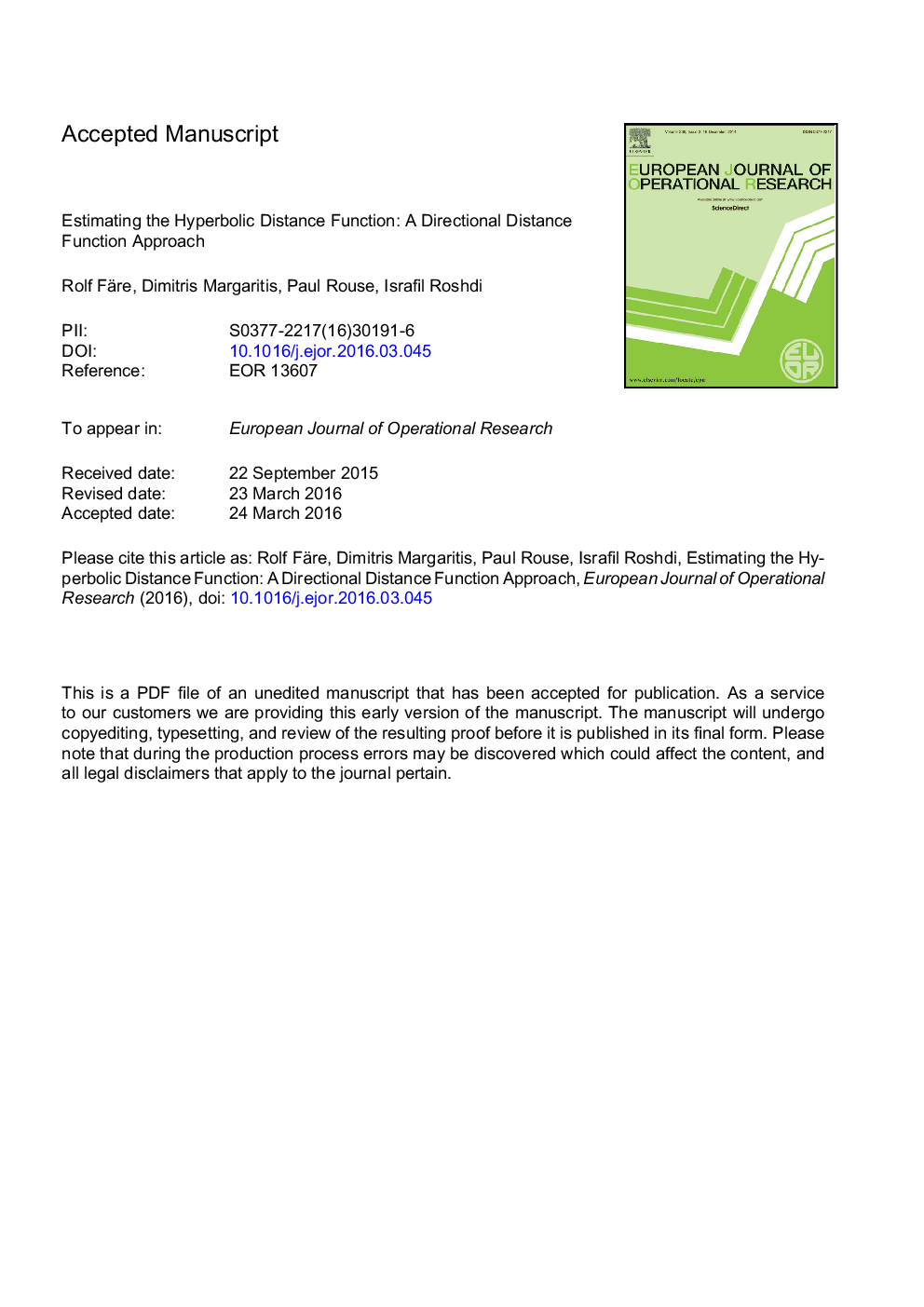| Article ID | Journal | Published Year | Pages | File Type |
|---|---|---|---|---|
| 6895516 | European Journal of Operational Research | 2016 | 23 Pages |
Abstract
Färe, Grosskopf, and Lovell (1985) merged Farrell's input and output oriented technical efficiency measures into a new graph-type approach known as hyperbolic distance function (HDF). In spite of its appealing special structure in allowing for the simultaneous and equiproportionate reduction in inputs and increase in outputs, HDF is a non-linear optimization and it is hard to solve particularly when dealing with technologies operating under variable returns to scale. By connecting HDF to the directional distance function, we propose a linear programming based procedure for estimating the exact value of HDF within the non-parametric framework of data envelopment analysis. We illustrate the computational effectiveness of the algorithm on several real-world and simulated data sets, generating the optimal value of HDF through generally solving at most two linear programs. Moreover, our approach has several desirable properties such as: (1) introducing a computational dual formulation for the HDF and providing an economic interpretation in terms of shadow prices; (2) being readily adaptable to measure hyperbolic-oriented super-efficiency; and (3) being flexible to deal with HDF-based efficiency measures on environmental technologies.
Related Topics
Physical Sciences and Engineering
Computer Science
Computer Science (General)
Authors
Rolf Färe, Dimitris Margaritis, Paul Rouse, Israfil Roshdi,
